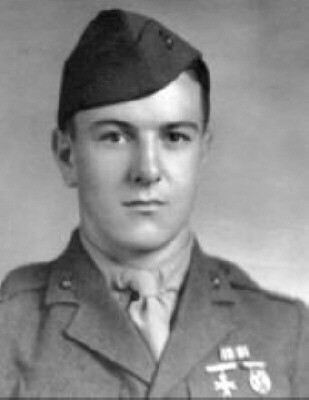

Pfc. Harold William Hayden, Usmc
September 28, 1924 — November 22, 1943
Harold William Hayden was born on 28 September 1924. He grew up in Hamilton County Ohio with his parents, Donald Schuyler and Clara (Menard) Hayden, and siblings Phyllis, Donald, and June; the family moved around the greater Cincinnati area, and had homes in Norwood and Deer Park. Donald and Clara's marriage ultimately ended in divorce; she remarried to one John Long and moved her children to Bond Hill in the 1930s.
Little information is readily available about Harold's childhood and teen years, although it is known he was an avid golfer. The Long's Bond Hill home at 5649 Prosser Avenue was a short walk to the Maketwah Country Club; Harold worked there as a caddy, and in 1941 he bested all his colleagues to win the club’s amateur championship.
On 21 September 1942, one week before his eighteenth birthday, Harold Hayden joined the Marine Corps. He was sent to Parris Island for boot training and was posted to the 11th Replacement Battalion in the winter of 1942. Private Hayden crossed the country with the 11th Replacement Battalion and departed from Camp Pendleton in early 1943. He was assigned to Company A, First Battalion, 6th Marines on 6 April 1943, and would spend the next four months training with them in New Zealand. That summer, he was promoted to the rank of Private First Class.
Harold was assigned to a light machine gun squad. In November 1943, Hayden was a member of Company A, 1st Battalion, 6th Marine Regiment, 2nd Marine Division, Fleet Marine Force, which landed against stiff Japanese resistance on the small island of Betio in the Tarawa Atoll of the Gilbert Islands, in an attempt to secure the island. Over several days of intense fighting at Tarawa, approximately 1,000 Marines and Sailors were killed and more than 2,000 were wounded, while the Japanese were virtually annihilated.
PFC Hayden's combat career was brutal, violent, and very short. On the morning of 22 November 1943, his battalion began advancing east along Betio's Black Beach, turning the flanks of numerous Japanese positions and pushing the defenders from the island's "head" towards the "tail" at the far end of the airstrip. The Marines suffered few casualties in the morning, but suffered dreadfully in the baking equatorial heat.
Japanese resistance grew more desperate as the day wore on, and in the late afternoon, 1/6th Marines halted to prepare for the night. A key element of the defensive line was well-positioned and well-supplied machine guns. PFC Hayden went off in search of extra ammunition. "We were setting up our defenses, and Harold was bringing a box of ammunition up to me," a fellow Marine reported. "He got alongside of me and set the box down and just about that time he got hit."
Harold Hayden was killed by a gunshot wound to the head. He was just nineteen years old. The following morning, his body was buried in a long trench alongside more than thirty fellow Marines who fell in the end stages of the battle for Betio. Officially, Harold Hayden's remains were buried in Grave #22, Row D, East Division Cemetery on Betio, This mass grave was lost in the years after the battle, and Hayden was declared non-recoverable in 1949.
The burial site was discovered by the non-profit research group History Flight in the spring of 2019. Hayden's remains were among those recovered, and he was identified by the DPAA on 7 June 2021.
On Wednesday, October 27, 2021 at 3:00 pm PFC Hayden will be laid to rest following a Graveside Service with full Military Honors at Arlington National Cemetery
Service Schedule
Past Services
Service
Wednesday, October 27, 2021
Starts at 3:00 pm (Eastern time)
Arlington National Cemetery
Guestbook
Visits: 1
This site is protected by reCAPTCHA and the
Google Privacy Policy and Terms of Service apply.
Service map data © OpenStreetMap contributors



